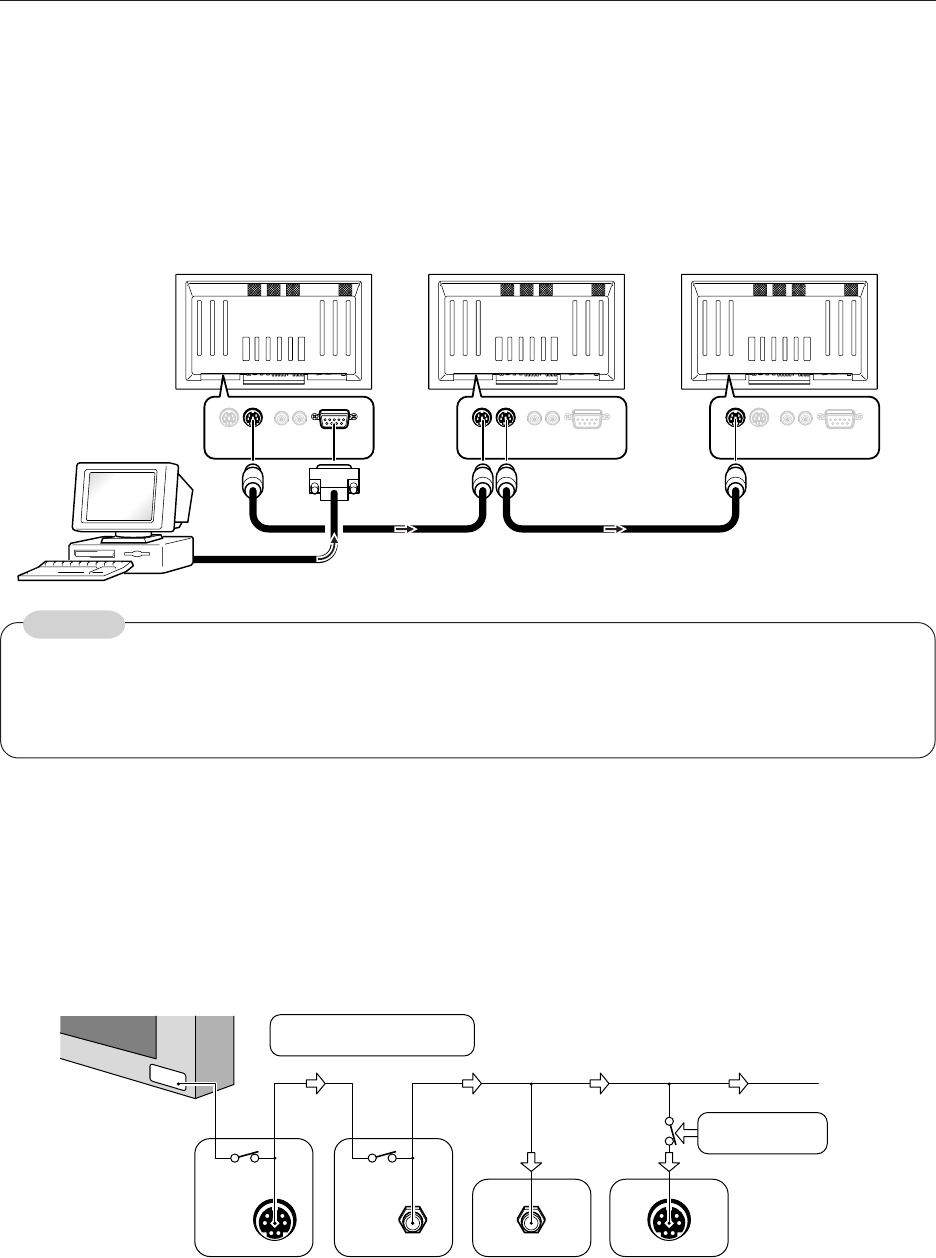
138
CONBINATION
RS - 232C
CONTROL
IN OUT IN OUT
RS - 232C
CONTROL
IN OUT
RS - 232C
CONTROL
IN OUT
CONBINATION
IN OUT
CONBINATION
IN OUT
Combination Connection
5.6 Combination Connection
This is useful for controlling/adjusting a number of sets from a single PC.
By carrying out combination connection and then assigning IDs to each of the sets, it becomes possible to control/
adjust a number of sets either all at once or individually.
5.6.1 Connections
Carry out connections as shown below. You can then control/adjust the units from the PC.
You may use either combination input or control port RS-232C connector, but not both at once. Using both
simultaneously will result in malfunction or system breakdown.
Don't connect combination inputs to other combination inputs, or combination outputs to other combination outputs.
It may cause a trouble.
General purpose Mini Din 6-pin (straight) cables may be used as combination cables.
1st unit
2nd unit
3rd unit
Combination cable
Combination cable
PC
OUT IN INOUT
NOTE
The connections for remote control signals are as shown below.
• The order of precedence for remote control signals is as follows:
1 Control IN terminal (SR IN) > 2 Combination IN terminal > 3 Remote control infra-red receiver
Example: If you connect a cable to the Control IN terminal (SR IN) then the built-in Control IN terminal (SR IN) switch
makes it impossible to receive remote control signals via either the remote control infra-red receiver (??) or
the Combination IN terminal.
(NOTE) RS-232C signals can still be received via the Combination IN terminal.
NOTE 1) In order to output remote control signals or RS-232C signals from the Combination OUT terminal, it is necessary
to assign an ID. For more details see “5.5.3 ID Assignment”.
NOTE 2) With the Combination IN/OUT terminals, remote control signals and RS-232C signals are inputted/outputted
simultaneously. For more details see “2.3 Controls and Connectors”.
3 Remote control
infra-red receiver
Remote control signal
block diagram
2 Combination
IN terminal
1 Control IN
terminal
(SR IN)
Control OUT
terminal
(SR OUT)
Combination
OUT terminal
OPEN when ID has not
been set (see NOTE 1)
To the PDP’s built-in
microcomputer


















